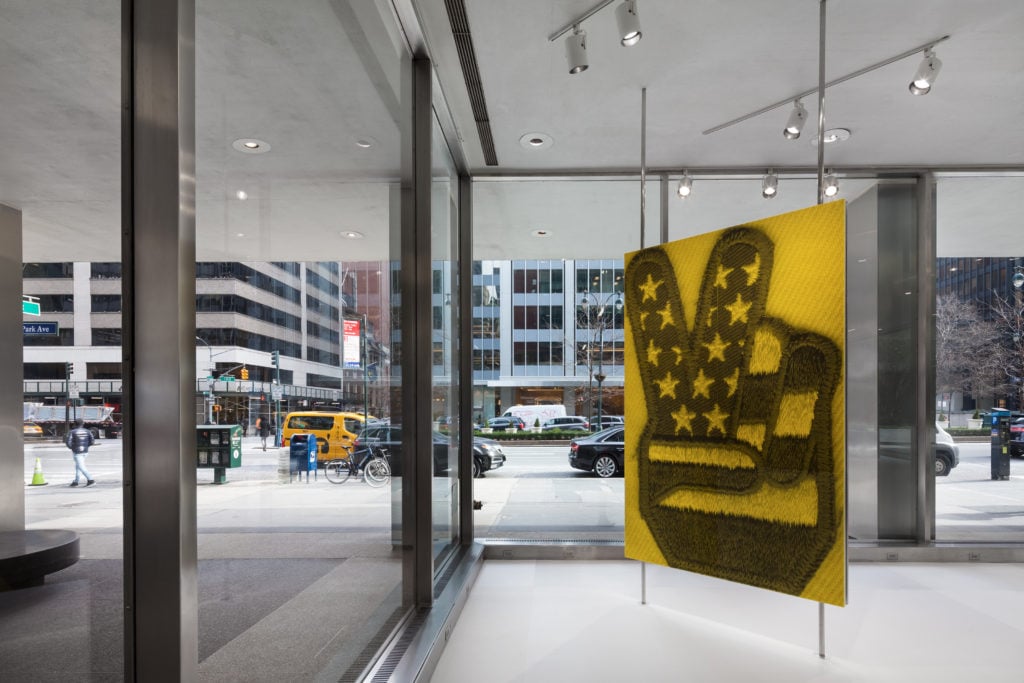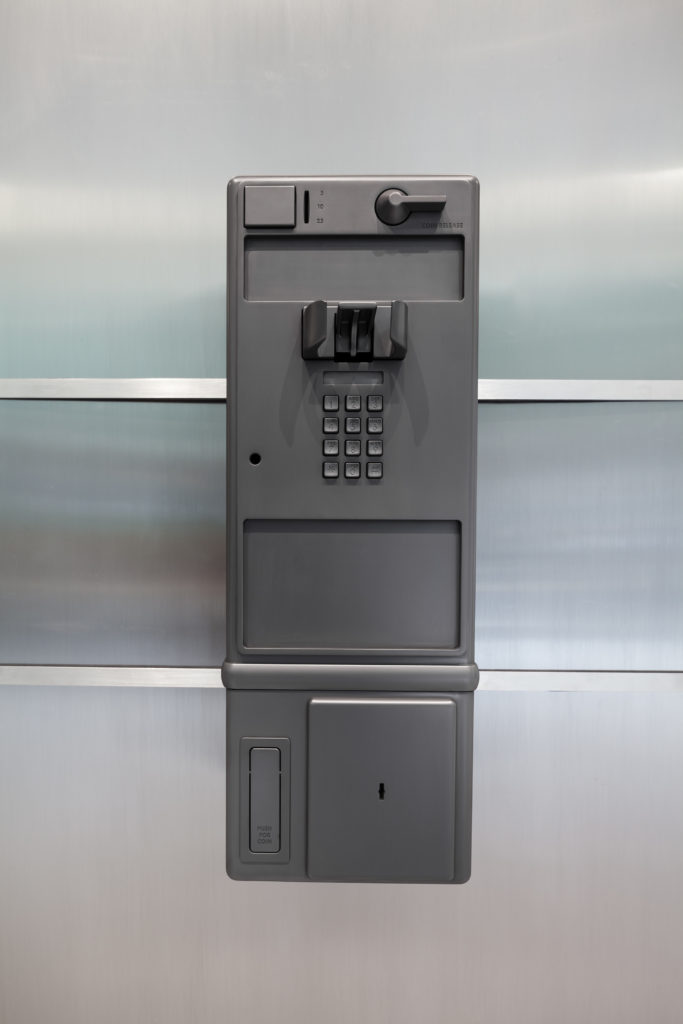Art World
Artist Adam McEwen’s Latest Show at the Lever House is Full of Useless But Beautiful Objects
His presentation in New York hits on themes that he's been exploring throughout his career.

His presentation in New York hits on themes that he's been exploring throughout his career.

Artnet News

A safe that doesn’t close. A payphone with no wires. A barbecue grill cover with no barbecue in sight.
These are some of the sculptures of objects—all made by artist Adam McEwen—that are on view in his current show at office building and art space Lever House, “10, FEELS LIKE 2.”
The title of the show alludes to McEwen’s interest in the passage of time and the role of memory in looking at art. Each object is “frozen in a specific moment in time, and separate from the viewer’s initial interaction,” says the show’s curator, Roya Sachs.
What looks useful (there’s also a clock made of pure graphite that doesn’t tell the time) actually has no practical purpose. “By forcing the viewer to confront their emotional connection to a specific form, Adam creates what he calls ‘analogies of non-delivery’—non-delivery because they have been disassociated from their former function,” Sachs says.

Installation view of “Adam McEwen: 10, FEELS LIKE 2,” at the Lever House in 2019. Photo by Jesse David Harris. Courtesy of the artist, Lever House Art Collection, and Petzel Gallery.
Americana is another big theme in the show, which is explained in part by the fact that McEwen, who was born in London in 1965, has been living for nearly 20 years in the United States. Two works depict the hand symbol for peace, which became part of the American vocabulary during the protests against the war in Vietnam. But before that, during the Second World War, it signaled V for victory.
“The [works] evoke a classic icon of American optimism and culture in the 1960s, but Adam is less interested in the actual image than how that symbol has changed generationally, and how its meaning has become null and void in contemporary society,” Sachs says.
McEwen wanted the show to relate to the cool, glass interior of the Park Avenue gallery, so he unified the space by covering the floor in polyethylene, which lends the appearance of ice. “I wanted to leave the space open as much as possible, so that you can see the architecture and so that it’s the architecture that determines what happens,” the artist said in a statement.
But what happens is often unexpected, which is exactly the point of the exhibition. “Adam’s work,” Sachs says, “is constantly suspended between what is and what seems, between our past and his present.”
“Adam McEwen: 10, FEELS LIKE 2” is on view at the Lever House, 390 Park Avenue, New York, through May 30.